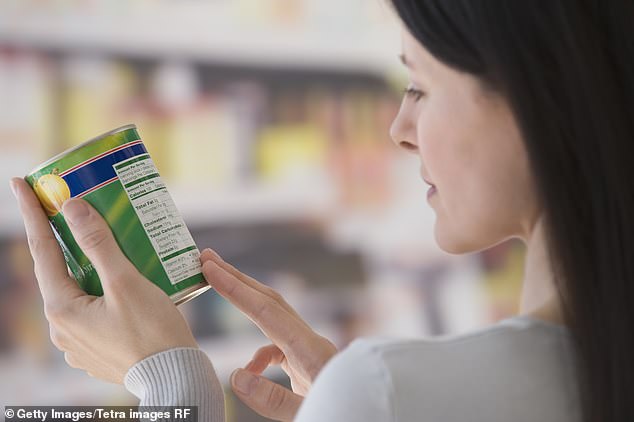A leading Australian nutritionist has revealed how to read food labels to ensure you know what every product contains.
Nutrition labels can be confusing to understand, but Jessica Sepel, 32, shared an easy step-by-step guide to ensure you are make healthier food choices.
On her website Jessica said the food label will display key information on energy and quantities, but it’s important to check the best before date, the order of ingredients listed and the serving size first.

Australian nutritionist and vitamin queen Jessica Sepel (pictued) has shared an easy step-by-step guide to ensure you are make healthier food choices
Check the order of ingredients
Not only is it important to check the ingredients used to make the product, but it’s also worth noting the order in which the ingredients are listed.
This is because ingredient contents appear in descending order by weight, meaning the first ingredient listed ‘contributed the largest amount and the last ingredient listed contributed the least amount’.
Jessica offered an example and wrote: ‘If sugar is listed as one of the first ingredients, it means the product contains a greater amount of sugar than other ingredients listed further down the list.’
Some products may also use different words, such as ‘sweetener’ or ‘thickener’ instead of ‘sugar’, but Jessica recommended buying product containing all natural ingredients that are easy to understand.

Not only is it important to check the ingredients used to make the product, but it’s also worth noting the order in which the ingredients are listed
Always check the date
Jessica said it’s always important to check the ‘best before’ date of products before purchasing to ensure the food won’t expire before you plan to eat or cook it.
Food, such as meat or dairy products, that has passed this date can cause potential health risks.
‘There’s nothing worse than getting home and not being able to eat the food you were craving or cook because the important ingredient was out of date,’ Jessica wrote.
Understand the ‘per 100g’ figures
Jessica said the ‘per 100g’ figures work the same as percentages, and when read correctly this can determine how much sugar, fat and salt a product contains.
For instance, if a product contains 20g of sugar per 100g, this means it is made from 20 per cent sugar.
‘We like to aim at having a product that has around 10 to 15g of sugar or less per 100g,’ Jessica said.
Common alternative names for sugar can also include glucose, syrup, cane sugar and corn syrup.
It’s also ideal to aim for around 250 to 300mg of sodium or salt per 100g, which equates to 5g or one teaspoon.
Whereas it’s best to purchase products that contain no more than 5g of fat per 100g.

Jessica said the ‘per 100g’ figures work the same as percentages, and when read correctly this can determine how much sugar, fat and salt a product contains
Understand the serving size
The recommended serving size may vary as it’s determined by the food manufacturer, Jessica revealed.
‘This information can be useful to approximate how much of a certain nutrient that you are consuming,’ she said.
‘For example, if you’re following a low sodium diet, use the ‘per serve’ column to work out how much sodium is in that serving of food.’
Source link : https://www.dailymail.co.uk/femail/article-10015269/Nutritionist-EXACTLY-read-supermarket-food-labels-ensure-youre-eating-healthily.html











